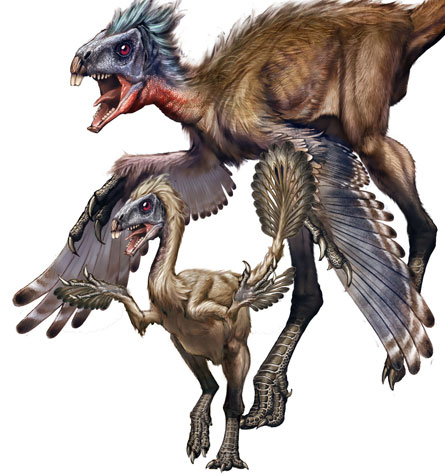Dinos molted for a new look
In one species, feathers change with age
Like kids today who don’t want to dress like Mom and Dad, some young feathered dinosaurs sported a look totally unlike their elders, a new study shows.

The finding hints that feathered dinosaurs, like modern birds, molted as they grew, says study coauthor Xing Xu, a paleontologist at the Institute of Vertebrate Paleontology and Paleoanthropology in Beijing.
The dramatic, age-related shift in plumage was noted in newly described fossils of Similicaudipteryx, a feathered creature that lived in what is now China about 125 million years ago. Xu and his colleagues analyzed two well preserved specimens of Similicaudipteyrx and report their findings in the April 29 Nature.
Both fossils are thought to come from juveniles because the vertebrae aren’t completely fused, which happens as animals reach adulthood, Xu says. In the larger and presumably older of the two specimens — a creature with an upper leg bone about 12 centimeters long and a body the size of a goose — the long feathers on the forelimbs and tail look just like modern bird feathers.
But in the pigeon-sized smaller creature, feathers on the forelimb and tail look modern only near their tips, Xu says. Closer to the body, those feathers have a ribbonlike shape but no central shaft — a type of structure previously seen in the tail feathers of some other Chinese feathered dinosaurs (SN: 12/9/2000, p. 374).
Unlike today’s birds, these dinosaurs changed the basic structure of their feathers some time during adolescence, says Xu, probably due to different timing and patterns of gene activity.







